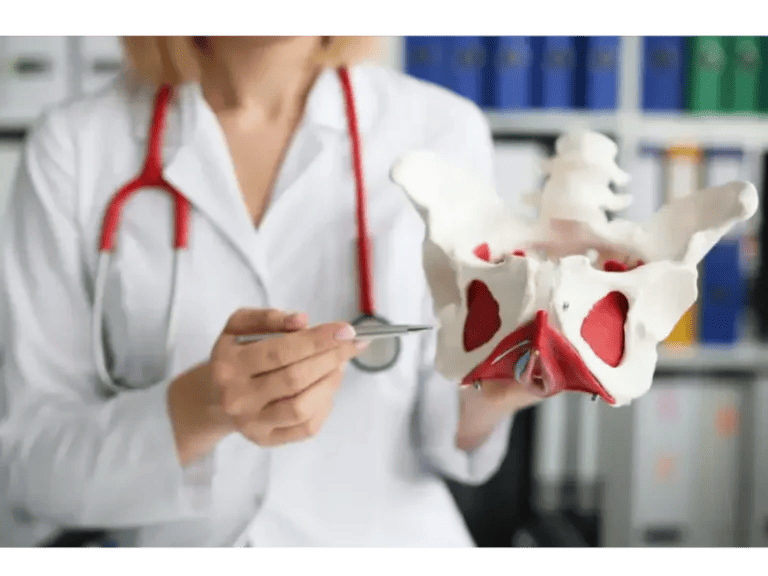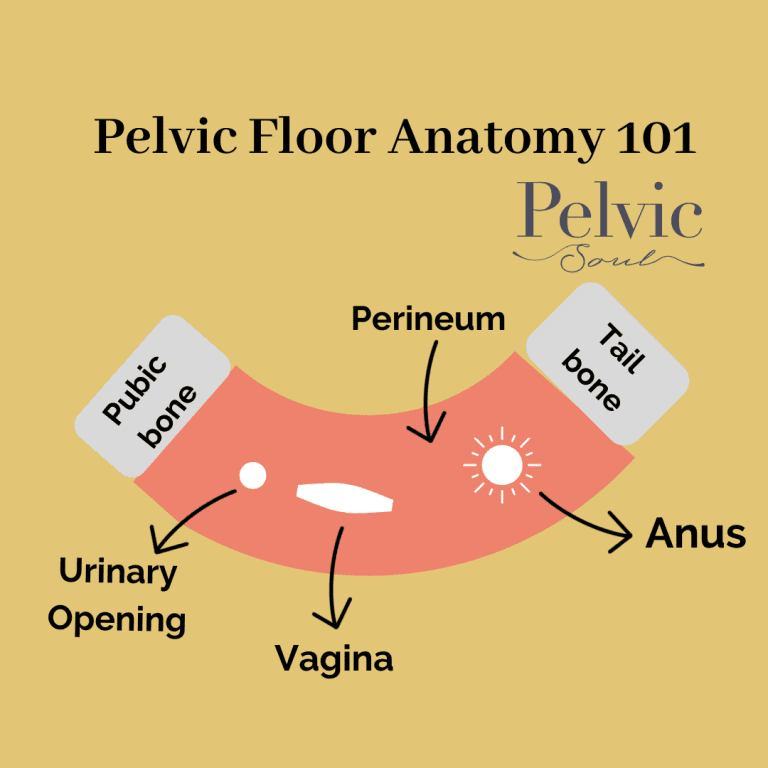
Sujata Martin, MS OTR/L
Founder of Pelvic Soul, Pelvic Health Therapist

Everyone You Know is Talking About It… Learn What It Is From Tampa's Best-Rated Pelvic Health Therapist!
In the most basic sense, the Pelvic Floor (PF) is a sling of muscle that covers the bottom of the bony muscle ring that forms the pelvis. These muscles are preset in people of all genders, and performs very similar functions, with some gender-based differences.
The pelvic floor is a large muscle that runs from the pubic bone in the front, to tail bone in the back. On the sides, it attaches to the sit bones or ischial tuberosities.

The above image is a female Pelvic Floor as seen from the bottom. As you can see, the muscle sling contains the clitoris, urinary opening, vaginal opening and the anus. If the Pelvic Floor is not performing at its best, one may have problems related to these important organs.
In men, the pelvic floor supports the prostate, the base of the penis, and the anus. The pelvic floor also contributes to suspending the scrotum and all of it contents (testicles, spermatic cord, connective tissue).
What Does the Pelvic Floor Do?





Why is This Info Important?
Getting to know ourselves physically is the first step in regaining one’s Pelvic Health & Wellness.



To correctly exercise your pelvic floor to solve your incontinence, pelvic pain, or sexual concerns, call us today at (813) 563-1585, or send us email by clicking here. Our practice continues to be the best-rated pelvic floor therapy practice in Tampa Bay, and also provides pelvic health & wellness support worldwide through virtual care.
It is so important to know our own anatomy. Understanding the pelvic floor can help with:
- To use the correct muscles when performing Pelvic Floor exercises.
- To be comfortable with one’s sexuality and work towards the goal of enjoyable self pleasure or partnered intercourse.
- To correctly use scar massage and mobilization techniques to reduce Pelvic pain.
- To process sexual or obstetric trauma.
How to Identify if You Need Pelvic Floor Therapy?
If you have any of the below signs, you likely have Pelvic Floor Dysfunction and will benefit from Pelvic Floor Therapy through in-person care in our Tampa Bay office or virtual consultations.












